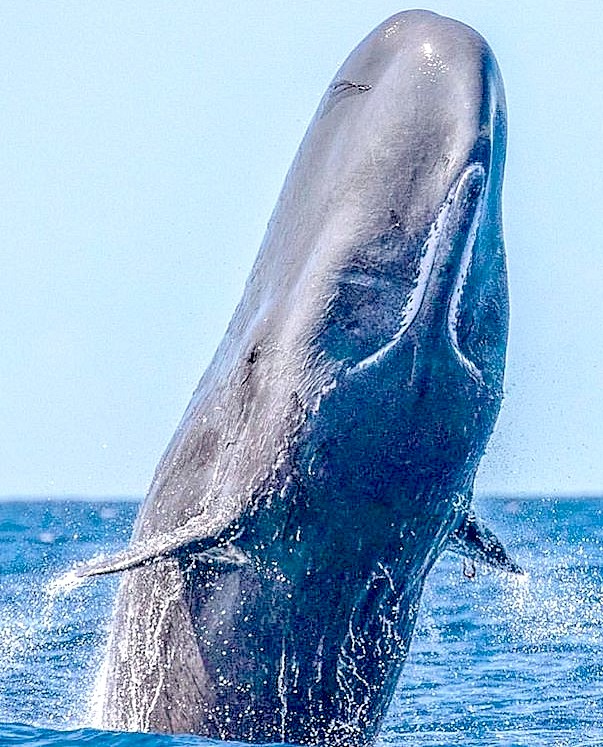
A
sperm whale broaching
The
sperm whale is the largest toothed whale, with adult males measuring up to 20.7 metres (68 ft) long and weighing up to 80 tonnes (79 long tons; 88 short tons). By contrast, the second largest toothed whale (Baird's beaked whale) measures 12.8 metres (42 ft) and weighs up to 14 tonnes (15 short tons).
The
most famous sperm whale is Moby
Dick, a fictional character created by Herman
Melville in 1850, published in book form in 1851.
The sperm whale is among the most sexually dimorphic of all cetaceans. At birth both sexes are about the same size, but mature males are typically 30% to 50% longer and three times as massive as females. Newborn sperm whales are usually between 3.7 to 4.3 meters (12 to 14 ft) long in length. Female sperm whales are physically mature at about 10.6 to 11 meters (35 to 36 ft) in length and generally don't grow much larger than about 12 metres (39 ft). Male sperm whales are physically mature at about 16 metres (52 ft) in length and generally reaching a maximum of about 18 to 19 meters (59 to 62 ft).
There are old reports of sperm whales approaching, reaching or exceeding 80 feet (24 m) in length but there is disagreement as to the accuracy of these claims which are often considered exaggerations or as being measured along the curves of the body. The whale that sank the Essex (one of the incidents behind Moby-Dick) was claimed to be 26 metres (85 ft). The
Nantucket Whaling Museum has a 5.5 metres (18 ft)-long jawbone which the museum claims that this individual was 24 metres (80 ft) long. A 5 metres (16 ft) long jawbone is held in the British Natural History Museum and a 4.7 metres (15 ft) long jawbone is held in the Oxford University Museum of Natural History. In 1853, one sperm whale was reported at 62 feet (19 m) in length with a head measuring 20 feet (6.1 m).
The largest animal weighed in whole was a sperm whale which measured 18 metres (59 ft) long and weighed 53 tonnes (52 long tons; 58 short tons). The largest sperm whale weighed in piecemeal was 18.1 metres (59 ft) long and weighed 57 tonnes (56 long tons; 63 short tons). An individual measuring 20.7 metres (68 ft) was reported from a Soviet whaling fleet near the Kuril Islands in 1950 and is cited by some authors as the largest accurately measured. It has been estimated to weigh 80 tonnes (79 long tons; 88 short tons). In a review of size variation in marine megafauna, McClain and colleagues noted that the largest male listed by the International Whaling Commission was recorded as 24 metres (79 ft) in 1933 and supported this as the largest; they noted, however, that sizes like these are rare and 95% of recorded sperm whales are below 15 metres (49 ft).
Extensive whaling may have decreased their size, as males were highly sought, primarily after World War II. Today, males do not usually exceed 18.3 metres (60 ft) in length or 51 tonnes (50 long tons; 56 short tons) in weight. Another view holds that exploitation by overwhaling had virtually no effect on the size of the bull sperm whales, and their size may have actually increased in current times on the basis of density dependent effects. Old males taken at Solander Islands were recorded to be extremely large and unusually rich in blubbers.
The sperm whale's unique body is unlikely to be confused with any other species. The sperm whale's distinctive shape comes from its very large, block-shaped head, which can be one-quarter to one-third of the animal's length. The S-shaped blowhole is located very close to the front of the head and shifted to the whale's left. This gives rise to a distinctive bushy, forward-angled spray.
The sperm whale's flukes (tail lobes) are triangular and very thick. Proportionally, they are larger than that of any other cetacean, and are very flexible. The whale lifts its flukes high out of the water as it begins a feeding dive. It has a series of ridges on the back's caudal third instead of a dorsal fin. The largest ridge was called the 'hump' by whalers, and can be mistaken for a dorsal fin because of its shape and size.
In contrast to the smooth skin of most large whales, its back skin is usually wrinkly and has been likened to a prune by whale-watching enthusiasts. Albinos have been reported. Generally, white sperm whales are bulls, protective of the herd or pod.
The sperm whale or cachalot (Physeter macrocephalus) is the largest of the toothed whales and the largest toothed predator. It is the only living member of the genus Physeter and one of three extant species in the sperm whale family, along with the pygmy sperm whale and dwarf sperm whale of the genus Kogia.
The sperm whale is a pelagic mammal with a worldwide range, and will migrate seasonally for feeding and breeding. Females and young males live together in groups, while mature males (bulls) live solitary lives outside of the mating season. The females cooperate to protect and nurse their young. Females give birth every four to 20 years, and care for the calves for more than a decade. A mature sperm whale has few natural predators, although calves and weakened adults are sometimes killed by pods of killer whales
(orcas).
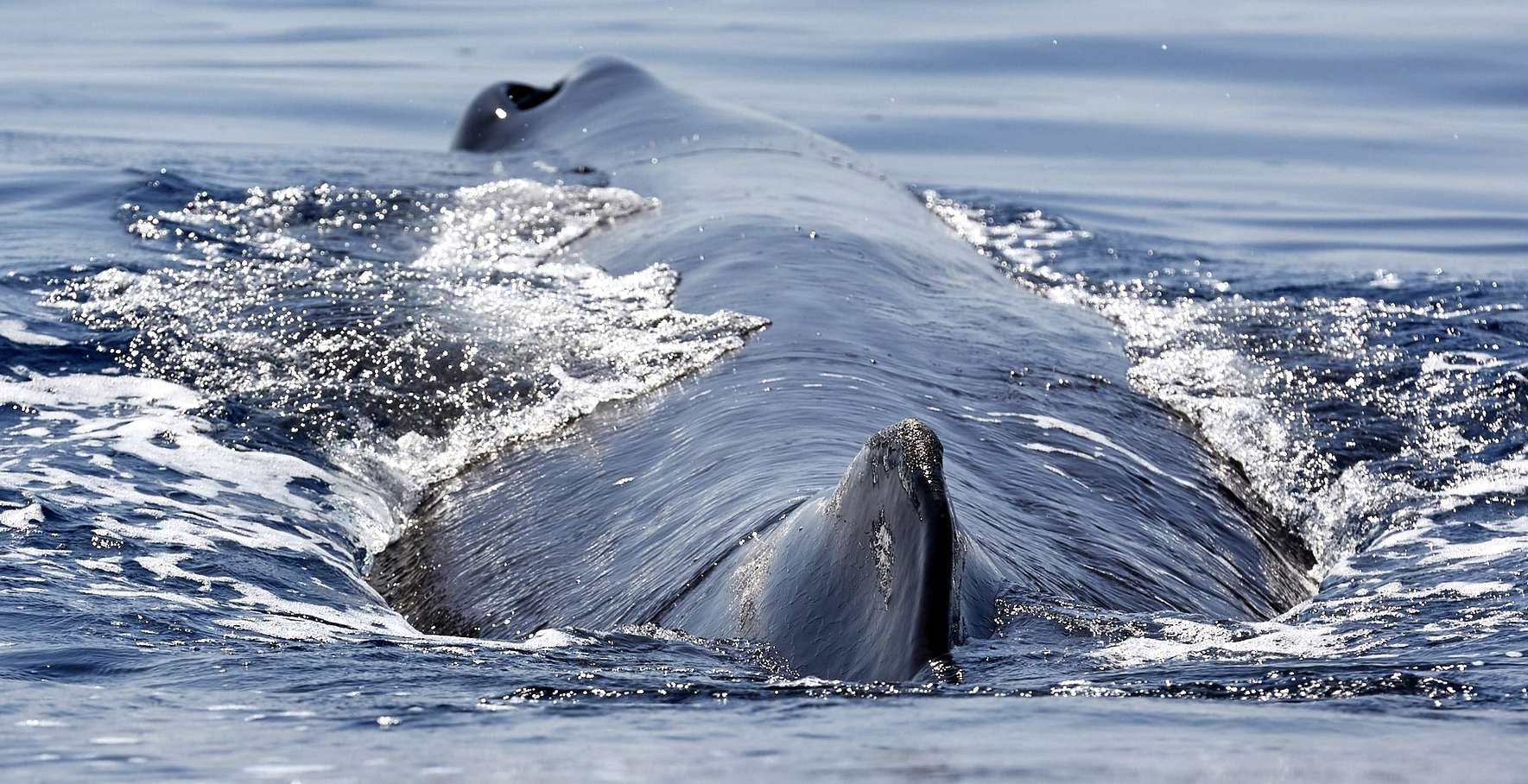
SPERMACETI
Atop the whale's skull is positioned a large complex of organs filled with a liquid mixture of fats and waxes called spermaceti. The purpose of this complex is to generate powerful and focused clicking sounds, which the sperm whale uses for echolocation and communication.
The spermaceti organ is like a large barrel of spermaceti. Its surrounding wall, known as the case, is extremely tough and fibrous. The case can hold within it up to 1,900 litres of spermaceti. It is proportionately larger in males. This oil is a mixture of triglycerides and wax esters. The proportion of wax esters in the spermaceti organ increases with the age of the whale: 38–51% in calves, 58–87% in adult females, and 71–94% in adult males. The spermaceti at the core of the organ has a higher wax content than the outer
areas. The speed of sound in spermaceti is 2,684 m/s (at 40 kHz, 36 °C), making it nearly twice as fast as in the oil in a dolphin's melon.
Below the spermaceti organ lies the "junk" which consists of compartments of spermaceti separated by cartilage. It is analogous to the melon found in other toothed
whales. The structure of the junk redistributes physical stress across the skull and may have evolved to protect the head during ramming.
Running through the head are two air passages. The left passage runs alongside the spermaceti organ and goes directly to the blowhole, whilst the right passage runs underneath the spermaceti organ and passes air through a pair of phonic lips and into the distal sac at the very front of the nose. The distal sac is connected to the blowhole and the terminus of the left passage. When the whale is submerged, it can close the blowhole, and air that passes through the phonic lips can circulate back to the lungs. The sperm whale, unlike other odontocetes, has only one pair of phonic lips, whereas all other toothed whales have two, and it is located at the front of the nose instead of behind the melon.
At the posterior end of this spermaceti complex is the frontal sac, which covers the concave surface of the cranium. The posterior wall of the frontal sac is covered with fluid–filled knobs, which are about 4–13 mm in diameter and separated by narrow grooves. The anterior wall is smooth. The knobbly surface reflects sound waves that come through the spermaceti organ from the phonic lips. The grooves between the knobs trap a film of air that is consistent whatever the orientation or depth of the whale, making it an excellent sound mirror.
The spermaceti organs may also help adjust the whale's buoyancy. It is hypothesized that before the whale dives, cold water enters the organ, and it is likely that the blood vessels constrict, reducing blood flow, and, hence, temperature. The wax therefore solidifies and reduces in volume. The increase in specific density generates a down force of about 392 newtons (88 lbf) and allows the whale to dive with less effort. During the hunt, oxygen consumption, together with blood vessel dilation, produces heat and melts the spermaceti, increasing its buoyancy and enabling easy surfacing. However, more recent
work has found many problems with this theory including the lack of anatomical structures for the actual heat exchange.
Herman Melville's fictional story Moby-Dick suggests that the "case" containing the spermaceti serves as a battering ram for use in fights between males. A few famous instances include the well-documented sinking of the ships Essex and
Ann Alexander by attackers estimated to weigh only one-fifth as much as the ships.
Owen Chase was first mate of the whaler Essex,
shipwrecked in 1820. His book, published in 1821, would inspire
Herman Melville to write
Moby-Dick.
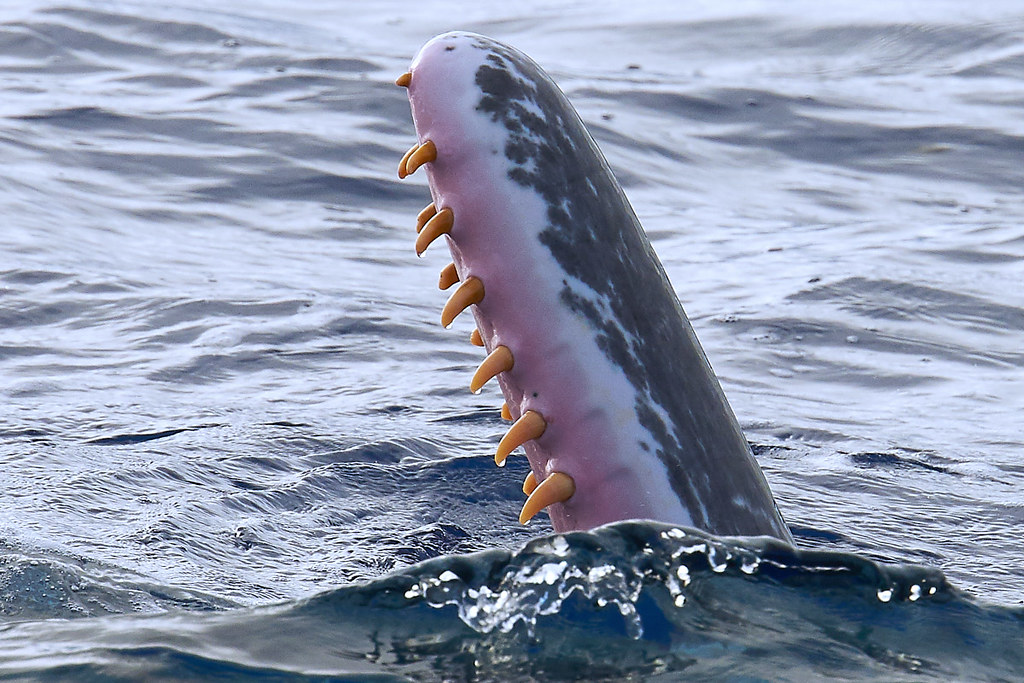
SINKING OF THE ESSEX
As first mate of Essex, 21-year-old Owen Chase left Nantucket on August 12, 1819 on a two-and-a-half-year whaling voyage. On the morning of November 20, 1820, a sperm whale (alleged to be around 85 feet, 26 m), twice rammed
the ship, sinking her 2,000 nautical miles (3,700 km) west of South America.
Much later in 1960, the manuscript of Thomas
Nickerson, detailing the same whale encounter was discovered, later
published in 1984, by way of excellent confirmation.

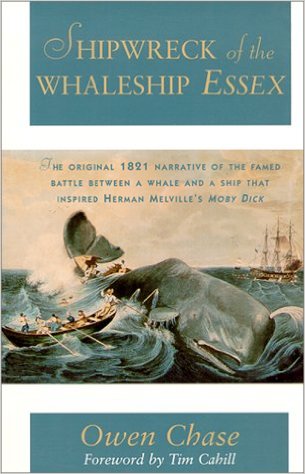
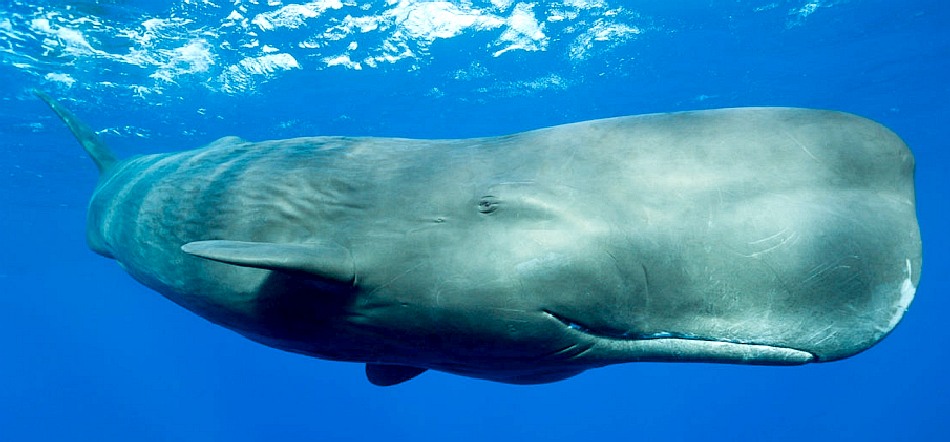
The
sperm whale has the largest brain on any animal alive on earth. No
wonder he's smiling.
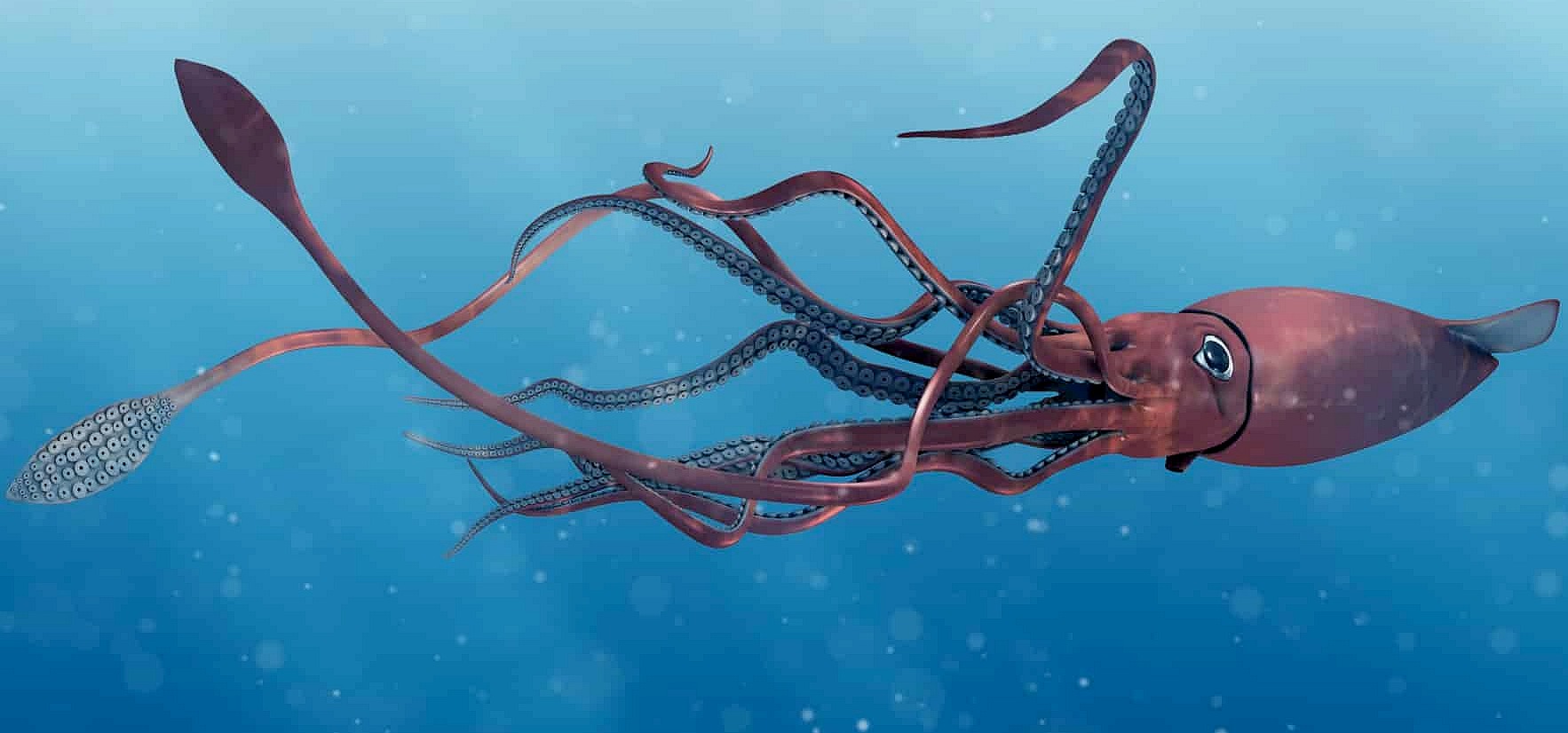
Sperm
whale's eat a lot of squid of different sizes, but they are hard to
swallow, leaving the whales to produce ambergris
to protect the stomachs from squid beaks.

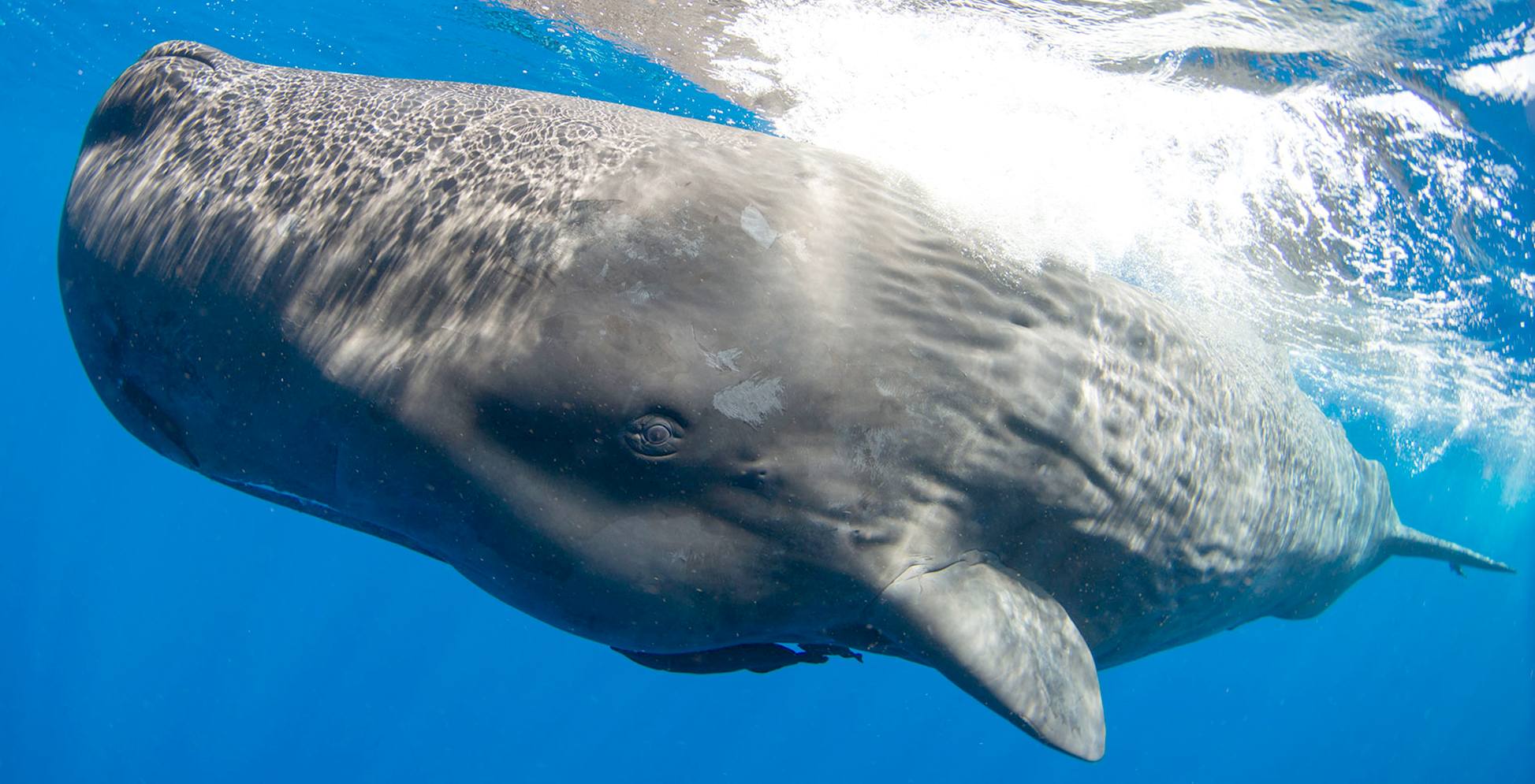
POPULAR CULTURE
based on the classic book by
Herman
Melville starring Captain
Ahab and the crew of the Pequod
who were fated to be killed by the giant white sperm whale Moby Dick.

Herman
Melville was the author of a story about what we'd now consider an illegal activity,
the commercial hunting of whales for oil and meat. Whaling is still
carried out by Japan, Iceland and Canada, among other nations, though
most nations voluntarily abstain in the interests of conserving the
magnificent animals - as per International
Whaling Commission guidelines.
Please use our
A-Z INDEX to
navigate this site









